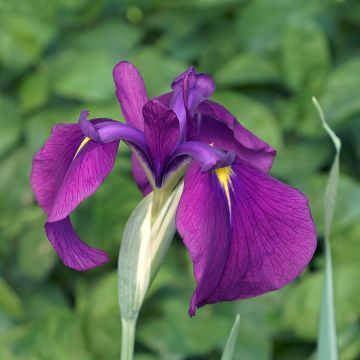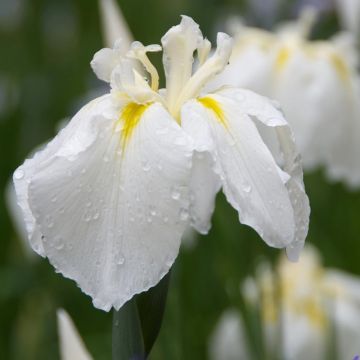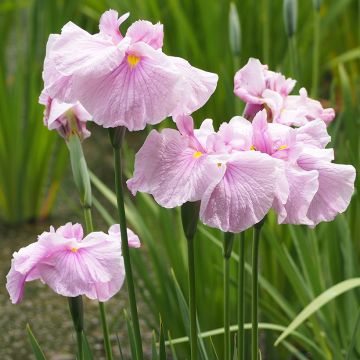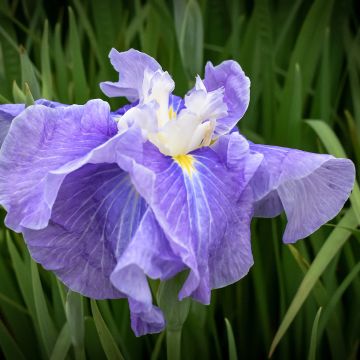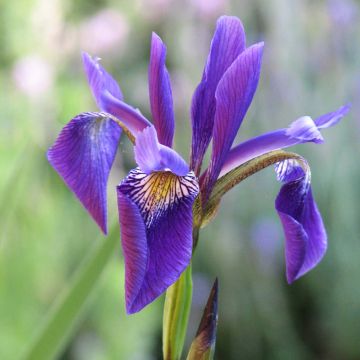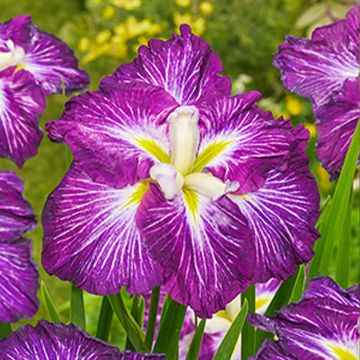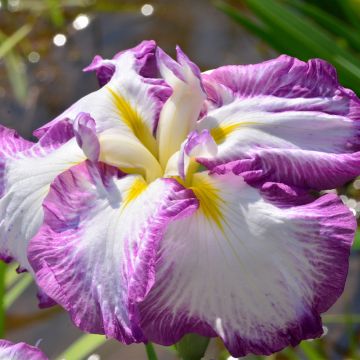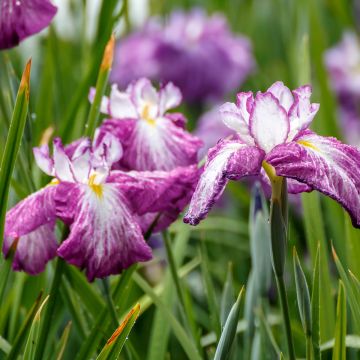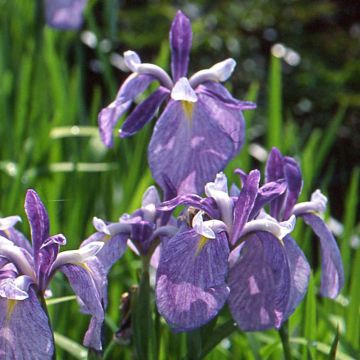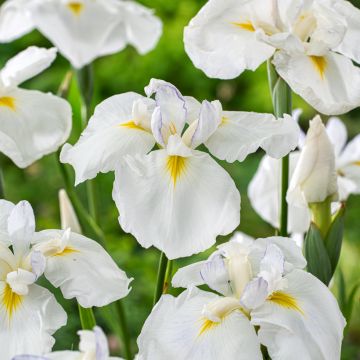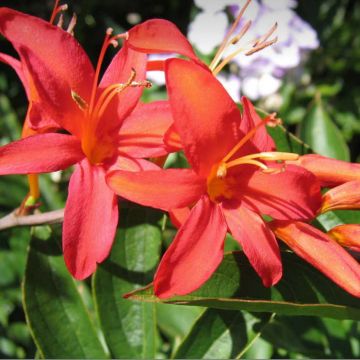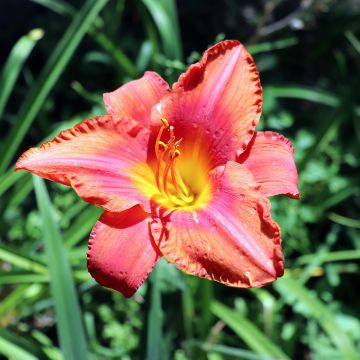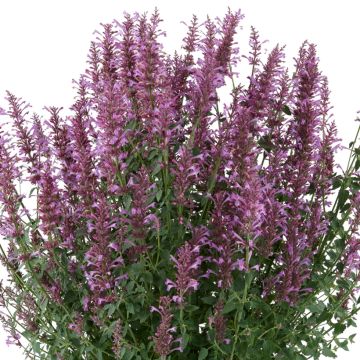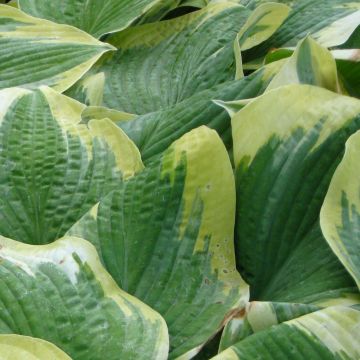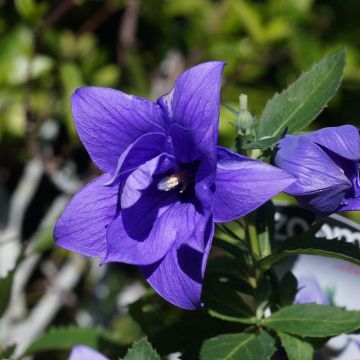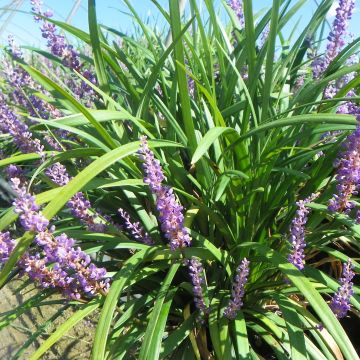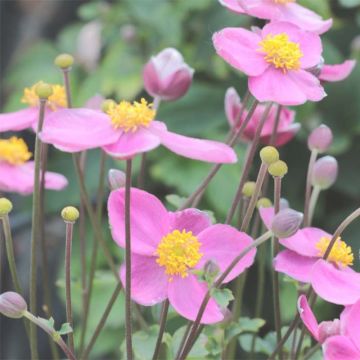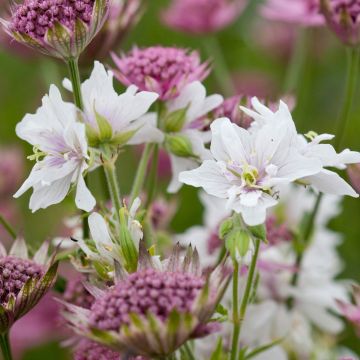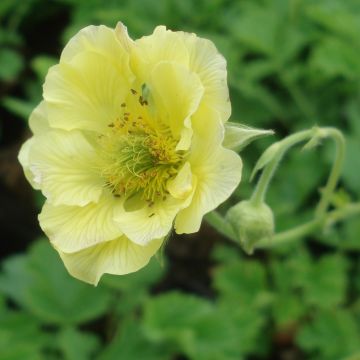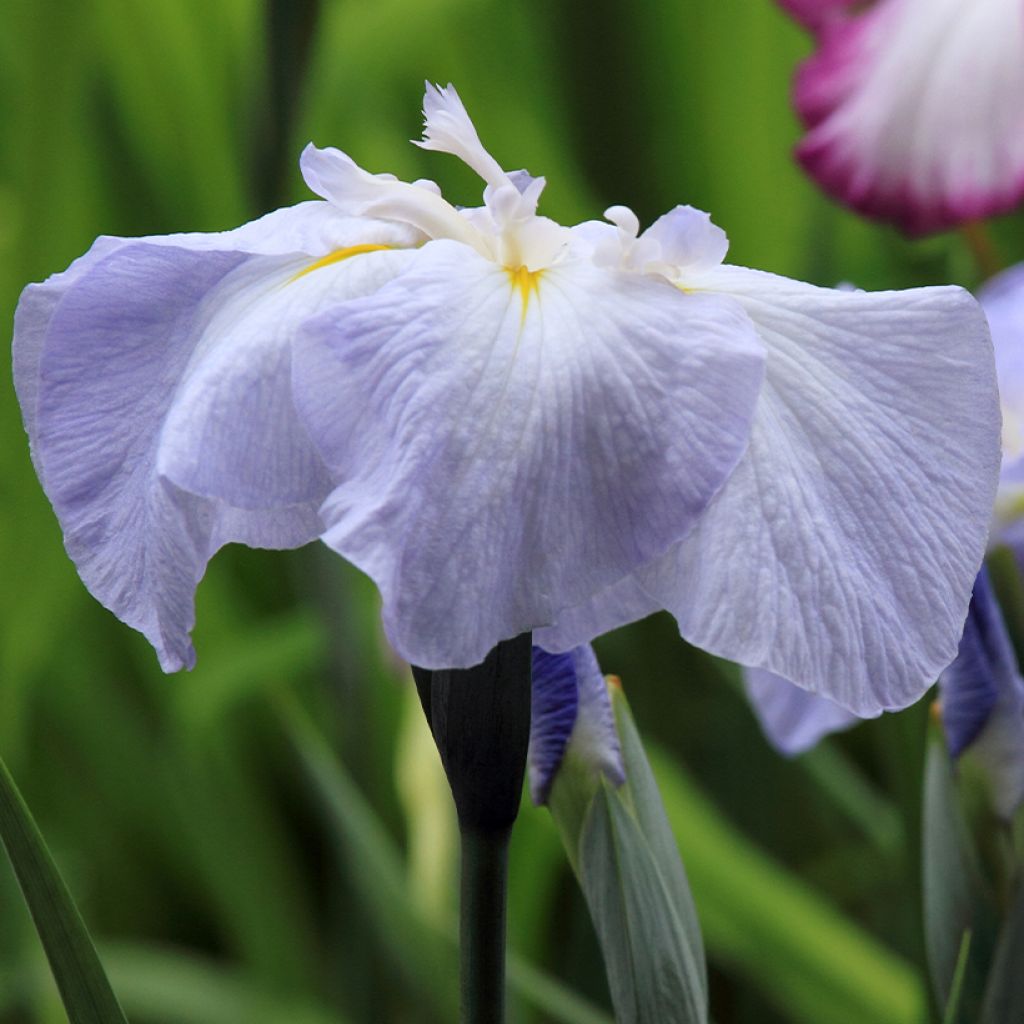

Iris ensata Dinner Plate Ice Cream - Japanese Water Iris
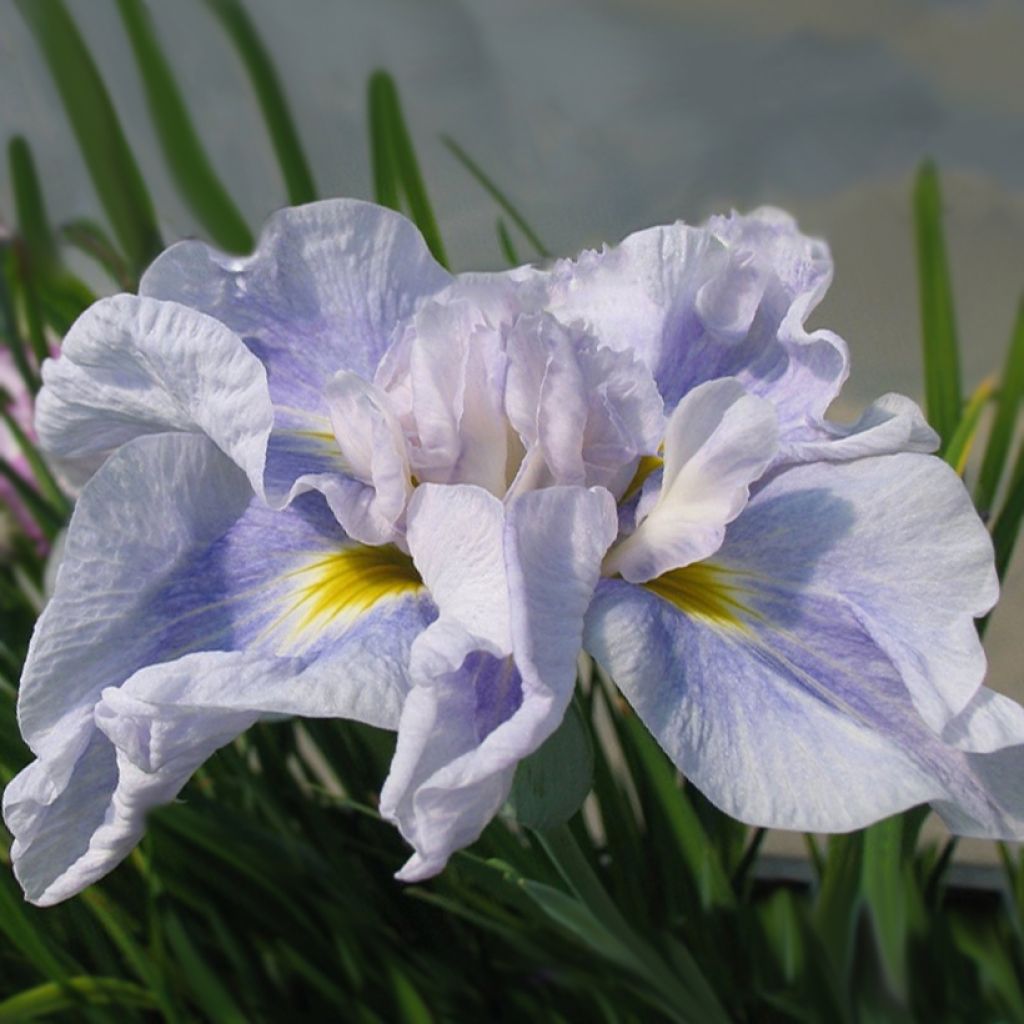

Iris ensata Dinner Plate Ice Cream - Japanese Water Iris
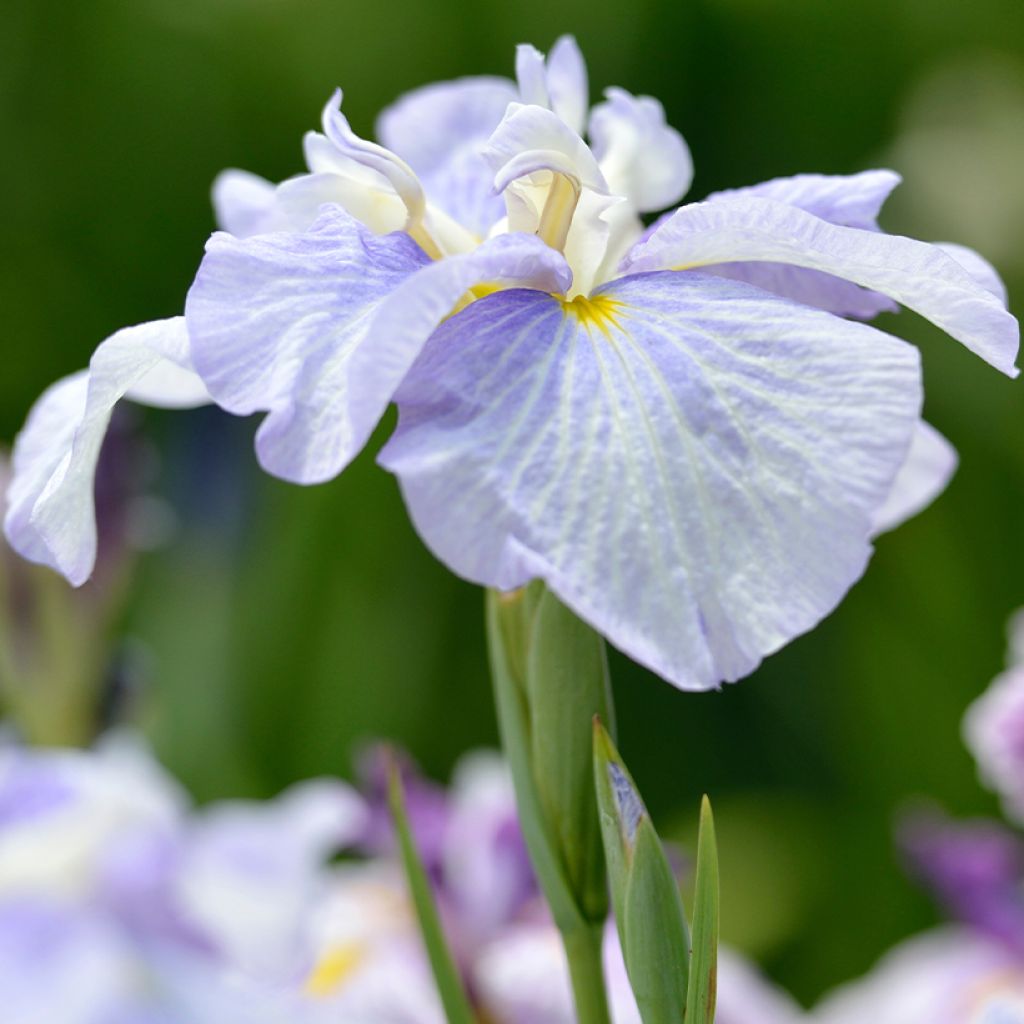

Iris ensata Dinner Plate Ice Cream - Japanese Water Iris
Iris ensata Dinner Plate Ice Cream - Japanese Water Iris
Iris ensata Dinner Plate Ice Cream
Japanese Water Iris, Sword-leaved Iris, Butterfly Iris
This item cannot be shipped to the selected country
Delivery charge from €5.90
Delivery charge from €5.90
More information
Schedule delivery date,
and select date in basket
This plant carries a 12 months recovery warranty
More information
We guarantee the quality of our plants for a full growing cycle, and will replace at our expense any plant that fails to recover under normal climatic and planting conditions.
From €5.90 for pickup delivery and €6.90 for home delivery
Express home delivery from €8.90.
From €5.90 for pickup delivery and €6.90 for home delivery
Express home delivery from €8.90.
Does this plant fit my garden?
Set up your Plantfit profile →
Description
Iris ensata 'Dinner Plate Ice Cream' is a rather extraordinary Japanese water iris variety whose pastel flowers reach the size of a dinner plate. They are double, flat, undulate, silky, a very light lavender mauve, enhanced by small lemon yellow spots. It is a mid-season variety that usually blooms in July. Unlike our garden irises, this rhizomatous perennial is comfortable in non-calcareous and waterlogged soils in summer. Superb when planted en masse in wet areas and on the banks of water points, Iris ensata were once intensively cultivated in Japan, especially around Edo (the ancestor of Tokyo), for cut flowers.
Iris ensata (synonym kaempferi), hanashōbu in Japanese, also known as Japanese water iris, have nothing in common with our classic garden irises, except for their belonging to the Iridaceae family. The original Iris ensata is a fibrous rhizome plant native to Asia, specifically to wet areas in Japan, the Himalayas, and Siberia. These irises, known to be difficult to grow, like acidic and peaty soils (cannot tolerate excess limestone), are thirsty for water during their growing and flowering period, but appreciate slightly less humid soil in winter: in nature, they are found above the water level, which often drops in winter and rises again in spring with the melting snow.
The cultivar 'Dinner Plate Ice Cream' is a recent horticultural creation from the 'Dinner Plate' series, which brings together varieties with oversized and remarkably coloured flowers. This magnificent 'Ice Cream' variety forms an erect, rather upright clump of vegetation, composed of fine leaves. The plant will reach about 60cm (24in) in height when flowering with a spread of 50cm (20in). This iris slowly spreads on the ground through its rhizomes, beautifying year after year. The deciduous foliage, of medium green colour, consists of long and slender ribbon-like leaves, sheathing at the base, marked by a prominent central vein. The non-remontant flowering occurs in summer, more or less early depending on the climate. Flower stalks emerge from the clumps of leaves. Each stalk bears 2 to 3 very large flat flowers, 15cm (6in) in diameter. Each flower consists of 6 large flattened and horizontal sepals, undulated, topped with 3 slightly smaller petals and 3 erect styles. The petals and sepals are a pale bluish mauve, finely veined with a darker tone, almost white at the edges. In the centre of the flower, bright yellow signals illuminate the whole.
Often cultivated on the banks of ponds and basins, Iris ensata, like many marsh plants, can live with their "feet" in the water during summer, but their rhizomes do not tolerate being submerged during winter, especially if it is freezing. In our gardens, these Japanese irises will thrive in a loamy soil, well lightened with compost, but not drying out in summer. Plant them, for example, in heavy soil forming a slight depression, at the bottom of a slope, or on a bank where the soil becomes moist through capillarity. Combine Iris ensata 'Dinner Plate Ice Cream' with other "Dinner Plate" varieties, Anemone rivularis, Darmera peltata, Lobelia 'Queen Victoria', Astilbes, Lysimachias, and Ligularias, for example.
Report an error about the product description
Iris ensata Dinner Plate Ice Cream - Japanese Water Iris in pictures
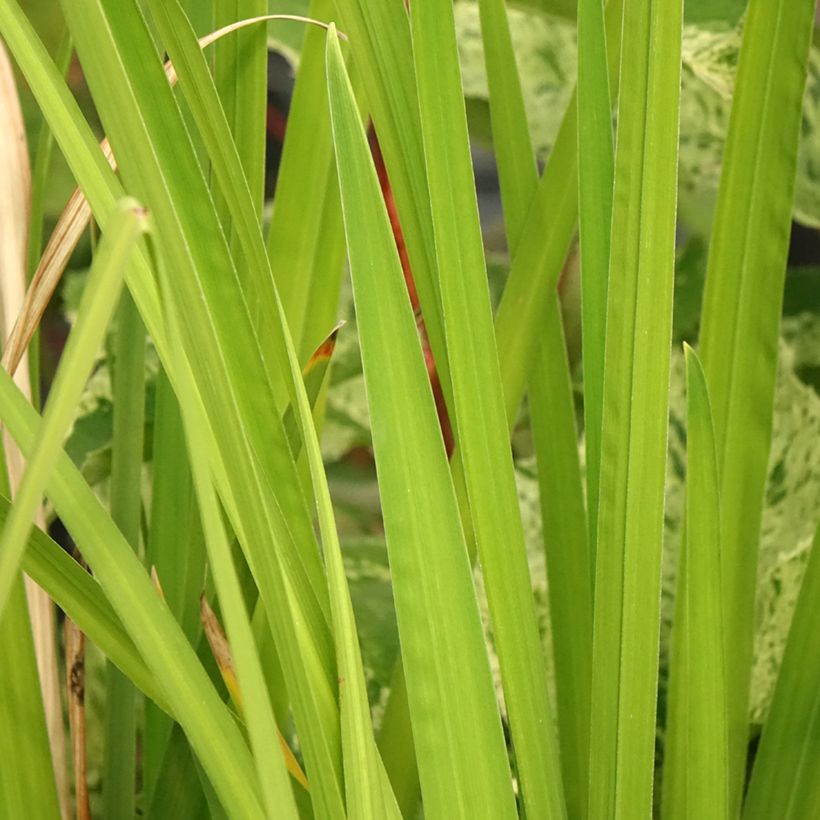

Flowering
Foliage
Plant habit
Botanical data
Iris
ensata
Dinner Plate Ice Cream
Iridaceae
Japanese Water Iris, Sword-leaved Iris, Butterfly Iris
Cultivar or hybrid
Other Japanese Iris
Planting and care
Iris ensata plants prefer a damp and marshy, peaty soil without limestone. They also tolerate a simply moist soil, even if it's not waterlogged, as long as it doesn't dry out in summer. However, they prefer a rather dry soil in winter. We have planted them near an artificial stream, which has a high water level during the summer. In winter, we let the level drop by about 15cm (6in), so that the stumps are above the water, as in nature where the river level decreases in winter and rises again in spring with the snow melt. Their cold resistance is excellent up to approximately -18°C (-0.4°F). It is even increased if the soil is dry.
Planting period
Intended location
Care
This item has not been reviewed yet - be the first to leave a review about it.
Summer flowering perennials
Haven't found what you were looking for?
Hardiness is the lowest winter temperature a plant can endure without suffering serious damage or even dying. However, hardiness is affected by location (a sheltered area, such as a patio), protection (winter cover) and soil type (hardiness is improved by well-drained soil).

Photo Sharing Terms & Conditions
In order to encourage gardeners to interact and share their experiences, Promesse de fleurs offers various media enabling content to be uploaded onto its Site - in particular via the ‘Photo sharing’ module.
The User agrees to refrain from:
- Posting any content that is illegal, prejudicial, insulting, racist, inciteful to hatred, revisionist, contrary to public decency, that infringes on privacy or on the privacy rights of third parties, in particular the publicity rights of persons and goods, intellectual property rights, or the right to privacy.
- Submitting content on behalf of a third party;
- Impersonate the identity of a third party and/or publish any personal information about a third party;
In general, the User undertakes to refrain from any unethical behaviour.
All Content (in particular text, comments, files, images, photos, videos, creative works, etc.), which may be subject to property or intellectual property rights, image or other private rights, shall remain the property of the User, subject to the limited rights granted by the terms of the licence granted by Promesse de fleurs as stated below. Users are at liberty to publish or not to publish such Content on the Site, notably via the ‘Photo Sharing’ facility, and accept that this Content shall be made public and freely accessible, notably on the Internet.
Users further acknowledge, undertake to have ,and guarantee that they hold all necessary rights and permissions to publish such material on the Site, in particular with regard to the legislation in force pertaining to any privacy, property, intellectual property, image, or contractual rights, or rights of any other nature. By publishing such Content on the Site, Users acknowledge accepting full liability as publishers of the Content within the meaning of the law, and grant Promesse de fleurs, free of charge, an inclusive, worldwide licence for the said Content for the entire duration of its publication, including all reproduction, representation, up/downloading, displaying, performing, transmission, and storage rights.
Users also grant permission for their name to be linked to the Content and accept that this link may not always be made available.
By engaging in posting material, Users consent to their Content becoming automatically accessible on the Internet, in particular on other sites and/or blogs and/or web pages of the Promesse de fleurs site, including in particular social pages and the Promesse de fleurs catalogue.
Users may secure the removal of entrusted content free of charge by issuing a simple request via our contact form.
The flowering period indicated on our website applies to countries and regions located in USDA zone 8 (France, the United Kingdom, Ireland, the Netherlands, etc.)
It will vary according to where you live:
- In zones 9 to 10 (Italy, Spain, Greece, etc.), flowering will occur about 2 to 4 weeks earlier.
- In zones 6 to 7 (Germany, Poland, Slovenia, and lower mountainous regions), flowering will be delayed by 2 to 3 weeks.
- In zone 5 (Central Europe, Scandinavia), blooming will be delayed by 3 to 5 weeks.
In temperate climates, pruning of spring-flowering shrubs (forsythia, spireas, etc.) should be done just after flowering.
Pruning of summer-flowering shrubs (Indian Lilac, Perovskia, etc.) can be done in winter or spring.
In cold regions as well as with frost-sensitive plants, avoid pruning too early when severe frosts may still occur.
The planting period indicated on our website applies to countries and regions located in USDA zone 8 (France, United Kingdom, Ireland, Netherlands).
It will vary according to where you live:
- In Mediterranean zones (Marseille, Madrid, Milan, etc.), autumn and winter are the best planting periods.
- In continental zones (Strasbourg, Munich, Vienna, etc.), delay planting by 2 to 3 weeks in spring and bring it forward by 2 to 4 weeks in autumn.
- In mountainous regions (the Alps, Pyrenees, Carpathians, etc.), it is best to plant in late spring (May-June) or late summer (August-September).
The harvesting period indicated on our website applies to countries and regions in USDA zone 8 (France, England, Ireland, the Netherlands).
In colder areas (Scandinavia, Poland, Austria...) fruit and vegetable harvests are likely to be delayed by 3-4 weeks.
In warmer areas (Italy, Spain, Greece, etc.), harvesting will probably take place earlier, depending on weather conditions.
The sowing periods indicated on our website apply to countries and regions within USDA Zone 8 (France, UK, Ireland, Netherlands).
In colder areas (Scandinavia, Poland, Austria...), delay any outdoor sowing by 3-4 weeks, or sow under glass.
In warmer climes (Italy, Spain, Greece, etc.), bring outdoor sowing forward by a few weeks.

































